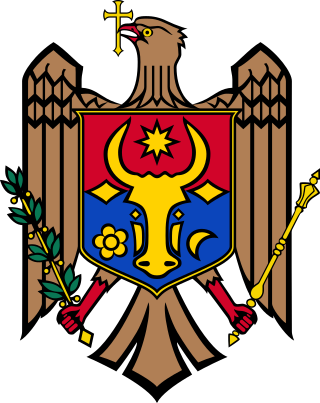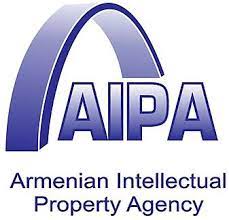Related Research Articles

The World Intellectual Property Organization Copyright Treaty is an international treaty on copyright law adopted by the member states of the World Intellectual Property Organization (WIPO) in 1996. It provides additional protections for copyright to respond to advances in information technology since the formation of previous copyright treaties before it. As of August 2021, the treaty has 110 contracting parties. The WCT and WIPO Performances and Phonograms Treaty, are together termed WIPO "internet treaties".

The World Intellectual Property Organization is one of the 15 specialized agencies of the United Nations (UN). Pursuant to the 1967 Convention Establishing the World Intellectual Property Organization, WIPO was created to promote and protect intellectual property (IP) across the world by cooperating with countries as well as international organizations. It began operations on 26 April 1970 when the convention entered into force. The current Director General is Singaporean Daren Tang, former head of the Intellectual Property Office of Singapore, who began his term on 1 October 2020.
An industrial design right is an intellectual property right that protects the visual design of objects that are purely utilitarian. An industrial design consists of the creation of a shape, configuration or composition of pattern or color, or combination of pattern and color in three-dimensional form containing aesthetic value. An industrial design can be a two- or three-dimensional pattern used to produce a product, industrial commodity or handicraft.
The Patent Cooperation Treaty (PCT) is an international patent law treaty, concluded in 1970. It provides a unified procedure for filing patent applications to protect inventions in each of its contracting states. A patent application filed under the PCT is called an international application, or PCT application.
The Paris Convention for the Protection of Industrial Property, signed in Paris, France, on 20 March 1883, was one of the first intellectual property treaties. It established a Union for the protection of industrial property. The convention is currently still in force. The substantive provisions of the Convention fall into three main categories: national treatment, priority right and common rules.
The Convention on the Unification of Certain Points of Substantive Law on Patents for Invention, also called Strasbourg Convention or Strasbourg Patent Convention, is a multilateral treaty signed by Member States of the Council of Europe on 27 November 1963 in Strasbourg, France. It entered into force on 1 August 1980, and led to a significant harmonization of patent laws across European countries.
Industrial property is one of two subsets of intellectual property, it takes a range of forms, including patents for inventions, industrial designs, trademarks, service marks, layout-designs of integrated circuits, commercial names and designations, geographical indications and protection against unfair competition. In some cases, aspects of an intellectual creation, although present, are less clearly defined. The object of industrial property consists of signs conveying information, in particular to consumers, regarding products and services offered on the market. Protection is directed against unauthorized use of such signs that could mislead consumers, and against misleading practices in general.
The Patent Law Treaty (PLT) is a treaty signed on 1 June 2000 in Geneva, Switzerland, by 53 States and the European Patent Organisation. It entered into force on April 28, 2005. It aims at harmonizing and streamlining formal procedures such as the requirements to obtain a filing date for a patent application, the form and content of a patent application, and representation. The treaty "does not establish a uniform procedure for all parties to the PLT but leaves parties free to require fewer or more user-friendly requirements than those provided in the PLT." As of February 2023, the PLT had 43 contracting states.
A utility model is a patent-like intellectual property right to protect inventions. This type of right is available in many countries but, notably, not in the United States, United Kingdom or Canada. Although a utility model is similar to a patent, it is generally cheaper to obtain and maintain, has a shorter term, shorter grant lag, and less stringent patentability requirements. In some countries, it is only available for inventions in certain fields of technology and/or only for products. Utility models can be described as second-class patents.
Intellectual property law in Romania has developed significantly in the period since the Romanian Revolution of 1989 because of the need to enforce various regional and international treaties and agreements, such as the Agreement on Trade-Related Aspects of Intellectual Property Rights (TRIPS), the European Directives on Biotechnological Inventions, on Trademarks and Geographical Indications, and on Supplementary protection certificates, the Trademark Law Treaty, the Patent Law Treaty, and the European Union regulation on the Community Trademark, and the need to harmonize domestic patent law with the European Patent Convention (EPC) and with the European Union.

The Berne Convention for the Protection of Literary and Artistic Works, usually known as the Berne Convention, was an international assembly held in 1886 in the Swiss city of Bern by ten European countries with the goal to agree on a set of legal principles for the protection of original work. They drafted and adopted a multi-party contract containing agreements for a uniform, border-crossing system that became known under the same name. Its rules have been updated many times since then. The treaty provides authors, musicians, poets, painters, and other creators with the means to control how their works are used, by whom, and on what terms. In some jurisdictions these type of rights are being referred to as copyright.

The African Regional Intellectual Property Organization (ARIPO), formerly African Regional Industrial Property Organization, is an intergovernmental organization for cooperation among African states in patent and other intellectual property matters. ARIPO was established by the Lusaka Agreement of 1976. It has the capacity to hear applications for patents and registered trademarks in its member states who are parties to the Harare (patents), Banjul (marks) and Arusha protocols. ARIPO also features a protocol on the protection of traditional knowledge, the Swakopmund Protocol, signed in 2010 by 9 member states of the organization which entered into force on May 11, 2015, and was amended on December 6, 2016.

The Agreement on Trade-Related Aspects of Intellectual Property Rights (TRIPS) is an international legal agreement between all the member nations of the World Trade Organization (WTO). It establishes minimum standards for the regulation by national governments of different forms of intellectual property (IP) as applied to nationals of other WTO member nations. TRIPS was negotiated at the end of the Uruguay Round of the General Agreement on Tariffs and Trade (GATT) between 1989 and 1990 and is administered by the WTO.
Panama has passed several laws protecting intellectual property in the country.
Iran is a member of the WIPO since 2001 and has acceded to several WIPO intellectual property treaties. Iran joined the Convention for the Protection of Industrial Property in 1959. In December 2003 Iran became a party to the Madrid Agreement and the Madrid Protocol for the International Registration of Marks. In 2005 Iran joined the Lisbon Agreement for the Protection of Appellations of Origin and their International Registration, which ensures the protection of geographical names associated with products. As at February 2008 Iran had yet to accede to The Hague Agreement for the Protection of Industrial Designs.

The Intellectual Property Office of Singapore (IPOS) is a statutory board under the Ministry of Law of the Government of Singapore. IPOS advises on and administers intellectual property (IP) laws, promotes IP awareness, and provides the infrastructure to facilitate the development of IP in Singapore.
Republic Act No. 8293, otherwise known as The Intellectual Property Code of the Philippines lays down the rules and regulations that grant, and enforce patents in the Philippines. Patents may be granted to technical solutions such as an inventions, machines, devices, processes, or an improvement of any of the foregoing. The technical solution must be novel, innovative, and industrially useful. In order for a technical solution to be granted a patent, the inventor must file an application to the Bureau of Patents, which will examine, and in some cases, grant its approval. The law is designed as to foster domestic creativity, to attract foreign investors, and to motivate inventors to release their products for public access.

The copyright law of Moldova regulates the copyright laws of Moldova. The first official decree related to copyright in the country was made on 25 November 1991, shortly after its independence on 27 August of the same year. On 25 May 1991, the State Agency on the Protection of Industrial Property (AGEPI) was created, making it the second copyright agency in the country together with the State Agency for Copyright (ADA). In 1993, Moldova signed an agreement on cooperation in the protection of copyright and the related rights between it and other countries, all members of the Commonwealth of Independent States (CIS), which only came into force in 1999. By the time of this year, Moldova had already created its official copyright law: Law No. 293-XIII, from 1994 but applied since 1995.

The Intellectual Property Agency of Armenia (AIPA) is the patent office of Armenia. The agency works under the supervision of the Ministry of Economy of Armenia and is tasked with granting patent and IP address protections, trademarks, and copyrights for objects of industrial property, inventions and usage patterns, industrial design, and commercial and service marks, among others.
References
- ↑ "Draft Substantive Patent Law Treaty". www.wipo.int. WIPO. Retrieved 17 February 2014.